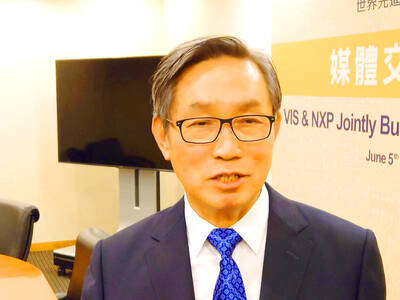Carrefour yesterday said it was pulling out of Singapore with the closure of its two existing outlets in the city-state by the end of this year.
The French retail giant was the first to introduce the hypermarket concept in Singapore with the opening of its first store in 1997.
TOUGH MARKET
However, Carrefour has found it tough to penetrate Singapore’s market of 5.2 million people largely because other rivals are better entrenched with a wider network of branches, many of them near public housing estates.
Carrefour’s two existing stores are located within distance of each other in the city-state’s main shopping and business district.
“Carrefour Singapore announces the decision to close its Suntec and Plaza Singapura stores before end of this year, since expansion and growth perspectives do not allow reaching a leadership position in the medium and long term,” the retailer said in a statement.
The decision to withdraw from Singapore is not a surprise, according to a senior executive with an Asian electronics company that is among Carrefour’s suppliers.
‘NOT COMPETITIVE’
“There was a lot of talk [of closing] from the internal staff and they have been clearing stock for the last two months,” said the executive, who declined to be named. “They were just not competitive enough.”
Carrefour, the world’s second-biggest retailer behind US group Walmart, reported in March that last year’s profit dropped by 14.3 percent to 371 million euros (US$463 million) amid weaker economic conditions.

STEEP DECLINE: Yesterday’s drop was the third-steepest in its history, the steepest being Monday’s drop in the wake of the tariff announcement on Wednesday last week Taiwanese stocks continued their heavy sell-off yesterday, as concerns over US tariffs and unwinding of leveraged bets weighed on the market. The benchmark TAIEX plunged 1,068.19 points, or 5.79 percent, to 17,391.76, notching the biggest drop among Asian peers as it hit a 15-month low. The decline came even after the government on late Tuesday authorized the NT$500 billion (US$15.2 billion) National Stabilization Fund (國安基金) to step in to buoy the market amid investors’ worries over tariffs imposed by US President Donald Trump. Yesterday’s decline was the third-steepest in its history, trailing only the declines of 2,065.87 points on Monday and

TAKING STOCK: A Taiwanese cookware firm in Vietnam urged customers to assess inventory or place orders early so shipments can reach the US while tariffs are paused Taiwanese businesses in Vietnam are exploring alternatives after the White House imposed a 46 percent import duty on Vietnamese goods, following US President Donald Trump’s announcement of “reciprocal” tariffs on the US’ trading partners. Lo Shih-liang (羅世良), chairman of Brico Industry Co (裕茂工業), a Taiwanese company that manufactures cast iron cookware and stove components in Vietnam, said that more than 40 percent of his business was tied to the US market, describing the constant US policy shifts as an emotional roller coaster. “I work during the day and stay up all night watching the news. I’ve been following US news until 3am

Six years ago, LVMH’s billionaire CEO Bernard Arnault and US President Donald Trump cut the blue ribbon on a factory in rural Texas that would make designer handbags for Louis Vuitton, one of the world’s best-known luxury brands. However, since the high-profile opening, the factory has faced a host of problems limiting production, 11 former Louis Vuitton employees said. The site has consistently ranked among the worst-performing for Louis Vuitton globally, “significantly” underperforming other facilities, said three former Louis Vuitton workers and a senior industry source, who cited internal rankings shared with staff. The plant’s problems — which have not

TARIFF CONCERNS: The chipmaker cited global uncertainty from US tariffs and a weakening economic outlook, but said its Singapore expansion remains on track Vanguard International Semiconductor Corp (世界先進), a foundry service provider specializing in producing power management and display driver chips, yesterday withdrew its full-year revenue projection of moderate growth for this year, as escalating US tariff tensions raised uncertainty and concern about a potential economic recession. The Hsinchu-based chipmaker in February said revenues this year would grow mildly from last year based on improving supply chain inventory levels and market demand. At the time, it also anticipated gradual quarter revenue growth. However, the US’ sweeping tariff policy has upended the industry’s supply chains and weakened economic prospects for the world economy, it said. “Now